

Ah – June in the garden! Summer’s on its way and the garden goes through one of the most beautiful periods of the year.
Flowers are in full bloom, shrubs are in their growth phase, fruit trees hint at how plentiful the harvest will be and the vegetable patch is already producing nice vegetables.
Sowing, planting, weeding and treatment of fruit trees, many different gardening tasks keep us busy in June.
<!–Discover: lunar calendar for the month of September–>
It is still time to plant annuals that will bloom in summer and fall.
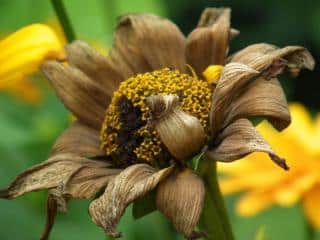 Remove wilted flowers from other plants regularly in order to trigger appearance of new flowers.
Remove wilted flowers from other plants regularly in order to trigger appearance of new flowers.
In case of heat wave and if it doesn’t rain, water regularly, in the evening if possible to avoid losing the water immediately through evaporation.
For plants purchased in a pot or a container, planting to the ground is still an option, as long as you’re able to water regularly because they’ll need a lot of water.
When the leaves of your spring bulb flowers have yellowed away, you may cut them. It’s indeed preferable to wait for this particular moment, so that they have enough time to replenish their stocks for the following year.
It’s still time to plant summer blooming bulb flowers. Montbretia will start preparing flower shoots at the end of the month.
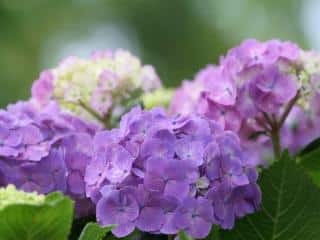 Shrubs that bloom in summer, for their part, need help preparing their coming blooming. Water on a regular basis and, eventually, provide shrub fertilizer.
Shrubs that bloom in summer, for their part, need help preparing their coming blooming. Water on a regular basis and, eventually, provide shrub fertilizer.
If you’re growing your boxwood in pots, feel free to water in the evening if the weather was warm and rain is lacking, because boxwood trees need water.
Lastly, provides fertilizer to your heath plants, especially your hydrangea. Thanks to that, you’ll have a magnificent blooming.
Although conifers don’t usually require any care, special conifer fertilizer will help them fight off diseases with gusto and produce very elegant branches.
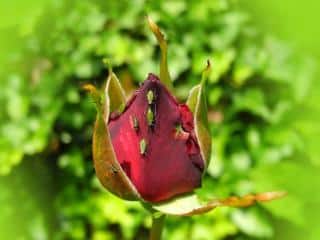 This is when aphids are the most active, they’re everywhere!
This is when aphids are the most active, they’re everywhere!
For your rose bushes and trees and bear even more stunning and long-lasting flowers, you may add rose tree fertilizer.
In case of heat and if it doesn’t, water the base of your rose trees without wetting the foliage to avoid spurring an onslaught of fungal diseases.
Bananas are also a common fruit in this season, keep the peels and toss them at the foot of your roses, they’ll thank you with nice flowers!
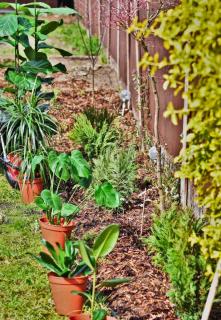 Not much to do at this stage for your fruit trees, except perhaps inspect them from time to time to check that they aren’t developing diseases.
Not much to do at this stage for your fruit trees, except perhaps inspect them from time to time to check that they aren’t developing diseases.
For cherry trees, protect your them with a net to keep the birds from getting at them.
You can thin a few fruits off from pear and apple, though it’s possible to do this next month. Thinning fruits helps remaining ones grow larger and healthier.
As for your grapevine, keep treating with Bordeaux mixture every two weeks to keep downy mildew from appearing.
You’ll stop the treatment more or less a month before harvesting the grapes.
June offers the chance to sow directly in the ground.
Thus, you may now plant red beet, carrot, chicory, cucumber, zucchini, bean, lettuce, turnip, watermelon, parsley, leek, pea, and radish.
These vegetables, which of course can also be sown before June, will have the advantage of producing a later harvest. This helps stage your production.
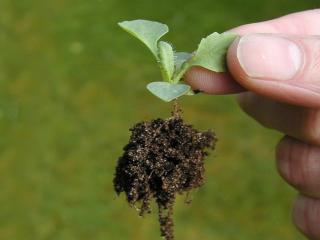 Transplant summer and fall vegetables to the ground, like eggplant, cucumber and pickle, zucchini, bell pepper, autumn leek, tomato and squash.
Transplant summer and fall vegetables to the ground, like eggplant, cucumber and pickle, zucchini, bell pepper, autumn leek, tomato and squash.
For the vegetables that have already been sown and are producing their first fruits, you must support them by weeding often.
Remember to water as soon as the soil is dry, while (just as for roses) avoiding wetting the leaves.
<!– Discover: lunar calendar for the month of September–>
Grow all your herbs and spices or condiments, including basil and coriander
If your lawn starts turning yellow, there’s no point in watering it. Watering a lawn consumes dreadful amounts of water, and this is a resource we must protect on our planet.
Just remind yourself that at the next fall of rain, it will bounce back to life!
However, you can provide lawn fertilizer to make it stronger and greener. An organic way of helping your lawn get ready for summer is to topdress the lawn. It will be magnificent!
June is the perfect month to set up insect hotels. Indeed, since most spring flowers are wilted already, insects are hard pressed to find nectar and pollen. This is called the June gap.
Animals like hedgehogs which control slug and snail populations can be attracted, too. They start scouting for spots where they can nest.